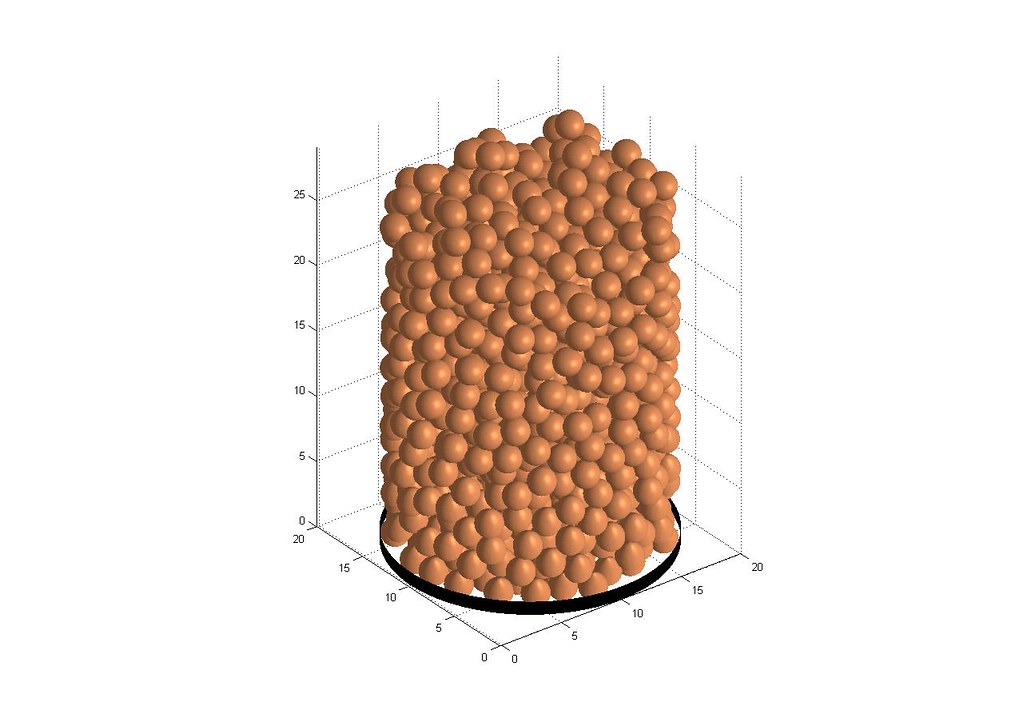Unit Conversion from Lattice Units to Physical Units
Trial for Numerical computation of Permeability—Lattice Boltzmann Method
Background
- Lattice Boltzmann method is a relatively new simulation technique for complex fluid systems. The discrete Boltzmann equation is solved to simulate the flow of a Newtonian fluid with collision models.
- Permeability (Hydraulic Conductivity) is the property of interest.
- If we can come up with the numerical results for permeability, we can do two parts of work: (1) correlate 2-point statistics to permeability through PCA and regression analyses (2) correlate structure properties to permeability (propose new equation).
Microstructure sub-volume and velocity fields samples
As we already explained, the Random Loose Packed Particles are generated by (Gravitational Sphere Packing Simulation)

Mono-sized Loosely Packed Particles
3-D LBM simulation of flow through one selected volume

A Sample Sub-volume

A Sample Sub-volume
Quantified velocity and flow rate

Velocity in X-Z plane (Z is the flow direction)
Conversion from Lattice Units to Physical Units
We precisely did the conversion, but we got stuck in the permeability computation in both Lattice and Physical Units. The problem is getting high value of permeability which is not rational.
Next Steps
- Try again to compute permeabilty
- Talk to somebody who can help us
- Consider tortuosity as the physical property of material
- 2-point spatial statistics
References
- Lattice Boltzmann Matlab Scripts. http://exolete.com/lbm/
- Wong, R. C. (2003). Strain-induced anisotropy in fabric and hydraulic parameters of oil sand in triaxial compression. Canadian geotechnical journal, 40(3), 489-500.
- Roozbahani, M. M., Graham‐Brady, L., & Frost, J. D. (2014). Mechanical trapping of fine particles in a medium of mono‐sized randomly packed spheres. International Journal for Numerical and Analytical Methods in Geomechanics.
- Çeçen, A., Fast, T., Kumbur, E. C., & Kalidindi, S. R. (2014). A data-driven approach to establishing microstructure–property relationships in porous transport layers of polymer electrolyte fuel cells. Journal of Power Sources, 245, 144-153.